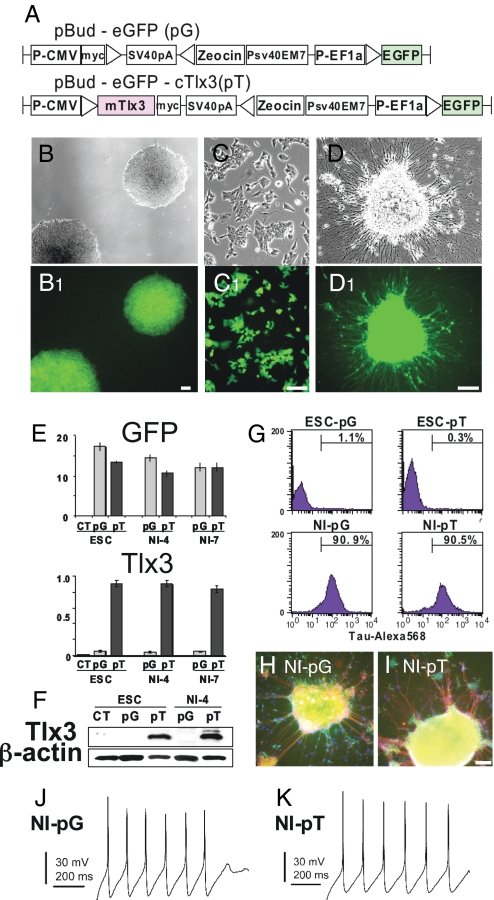Fig. 2.
Mouse ES cells can be efficiently directed to differentiate into neurons and stably express a transgene after neural differentiation. (A) Mouse Tlx3 expression construct pBud-eGFP-cTlx3 (pT) and control construct pBud-eGFP (pG) used in this study. (B–D) ES cells stably expressing the EGFP-tagged expression construct after Zeosin selection (B), dissociation (C), and neural induction (D). (E) Quantitative RT-PCR for EGFP and Tlx3 in ES cells expressing the Tlx3 expression vector (pT) or control vector (pG) before neural induction, 4 days (NI-4) or 7 days (NI-7) after neural induction. CT, untranfected ES cells. (F) Western blot analysis for Tlx3 in undifferentiated ES cells or ES-derived cells at neural induction day 4 (NI-4) expressing pT or pG. (G) Flow cytometry profiles of Tau-Alexa568 fluorescence in pG- or pT-expressing ES-derived cells before and after neural induction (NI). (H and I) Pan-neural marker Tau (red) is expressed in both pG-expressing (H) or pT-expressing (I) cells. Cellular nuclei were stained with DAPI (blue). (J and K) ES-derived neurons expressing pG-generated (J) and pT-generated (K) action potentials in response to current injection. Cells were biased to a resting membrane potential of −65 to −70 mV, and action potentials were elicited with 1-sec-long current injections of 2–50 pA. (Scale bars: 100 μm.)

